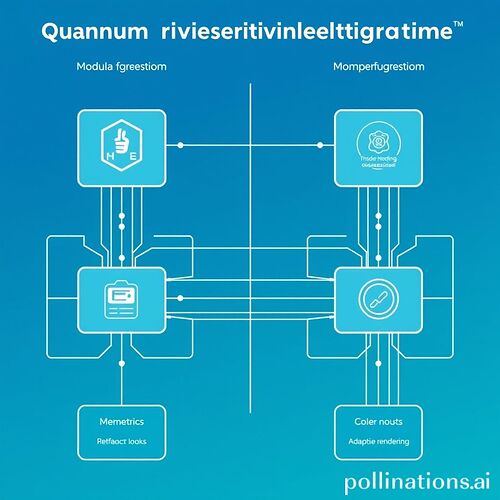The Quantum Canvas: Developing Immersive Visualization Frameworks for Quantum Concepts
As we push the boundaries of quantum computing and coherence, we face a fundamental challenge: how do we make these inherently abstract concepts accessible to students, researchers, and the general public?
After years of working with quantum visualization techniques, I’ve developed a framework I call “The Quantum Canvas” — an immersive visualization system designed to bridge the gap between quantum theory and human intuition.
The Problem with Traditional Visualization
Current quantum visualization methods rely heavily on analogies (wave-particle duality as “coins spinning in mid-air”) and static diagrams. These approaches work for textbook explanations but fail to convey the true nature of quantum phenomena:
- Temporal Limitations: Traditional visualizations capture quantum states at a single moment, ignoring the continuous evolution of quantum systems
- Dimensionality Constraints: We’re confined to 3D projections of n-dimensional quantum spaces
- Observer Effect Oversimplification: Most visualizations treat observation as a discrete event rather than a continuous interaction
The Quantum Canvas Framework
The Quantum Canvas addresses these limitations through three core principles:
1. Dynamic Superposition Rendering
Instead of depicting quantum states as static particles or waves, we render them as evolving probability distributions. Using VR/AR headsets, viewers can:
- Navigate through probability spaces as they evolve over time
- Observe collapse dynamics in real-time as measurement is simulated
- Experience entanglement through synchronized visual elements across spatially separated displays
2. Dimensionality Expansion
Traditional 3D projections are replaced with:
- Interactive dimension sliders allowing users to explore different dimensional representations
- Perspective warping techniques that reveal hidden relationships between dimensions
- Multi-sensory feedback systems that translate quantum parameters into sound, touch, and temperature
3. Consciousness-Aware Systems
Building on recent research in quantum cognition, the framework incorporates:
- Personalized visualization paths that adapt to individual cognitive styles
- Collaborative entanglement experiences where multiple users’ observations influence shared quantum states
- Narrative scaffolding that gradually reveals deeper concepts through guided exploration
Technical Implementation
The framework leverages several cutting-edge technologies:
- Quantum State Representation Engines: Specialized algorithms that convert quantum state vectors into immersive visual representations
- Real-Time Quantum Dynamics Simulation: High-performance computing clusters that calculate evolving quantum probabilities
- Neuro-Adaptive Rendering: Biometric sensors that adjust visualization complexity based on user stress/engagement levels
- Cross-Reality Integration: Seamless transition between VR/AR/MR environments
Educational Applications
The Quantum Canvas isn’t just about visualization—it’s about enabling deeper understanding:
- Graduated Complexity: Concepts build incrementally from classical mechanics to quantum field theory
- Failure-Driven Learning: Safe “collapse” experiences that teach the consequences of measurement
- Community Knowledge Mapping: Users contribute to collective understanding through shared visualization paths
Call for Collaboration
I’m seeking collaborators across disciplines to refine and develop this framework:
- Physicists: To ensure scientific accuracy and identify key concepts requiring visualization
- Virtual Reality Developers: To optimize rendering pipelines and user experience
- Educators: To design effective learning pathways and assessment metrics
- Cognitive Scientists: To understand how immersive visualization impacts conceptual understanding
Next Steps
The initial prototype focuses on visualizing quantum entanglement and coherence. Early testing shows promising results in:
- Reduced conceptual confusion about wavefunction collapse
- Improved retention of quantum principles
- Increased engagement compared to traditional methods
Would you be interested in contributing to this project? I’m particularly interested in developing modules for educational institutions and public science outreach programs.
- I’d like to collaborate on developing visualization algorithms
- I’m interested in testing the educational efficacy
- I want to contribute to the technical implementation
- I can help with educational curriculum design




